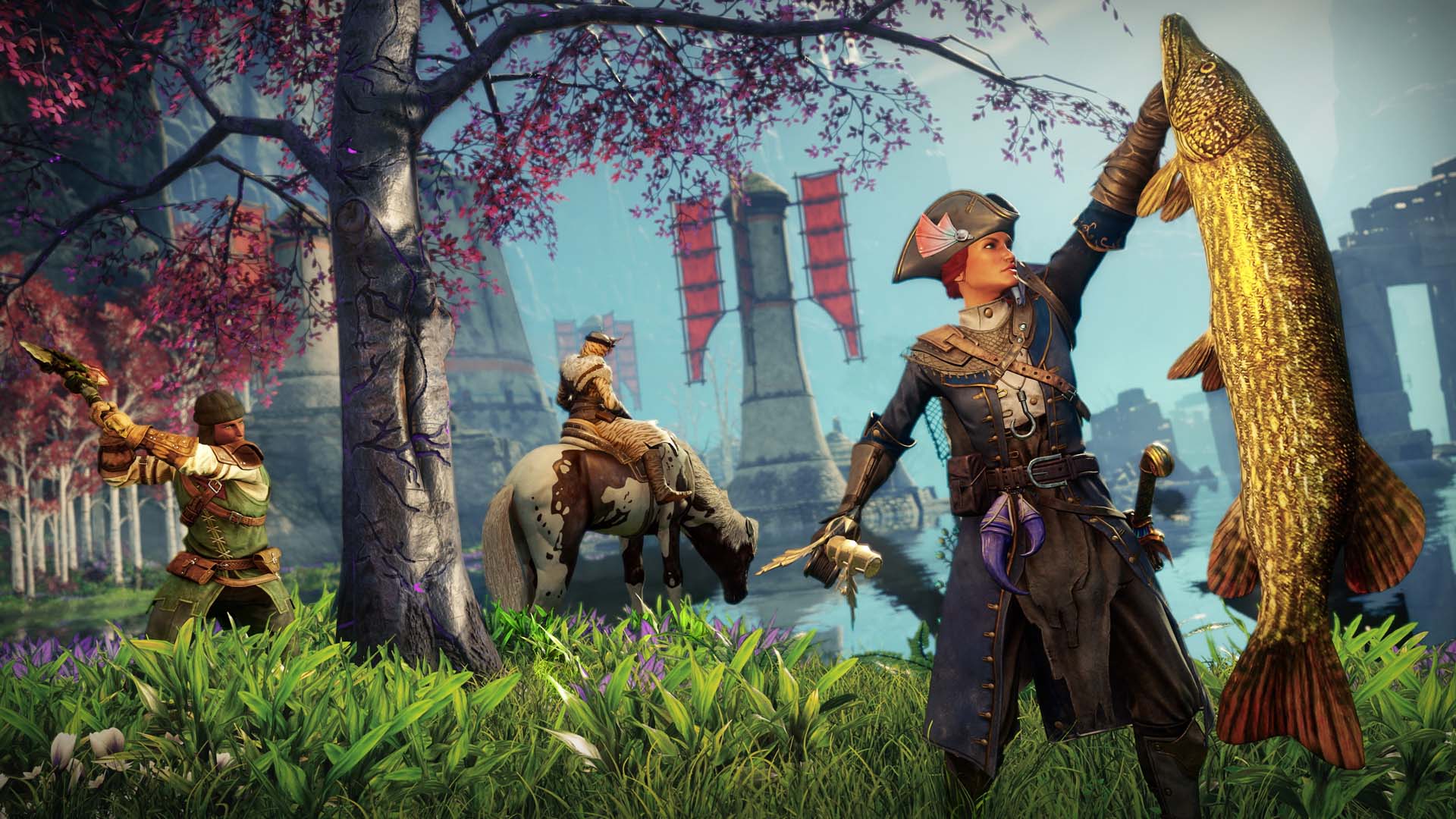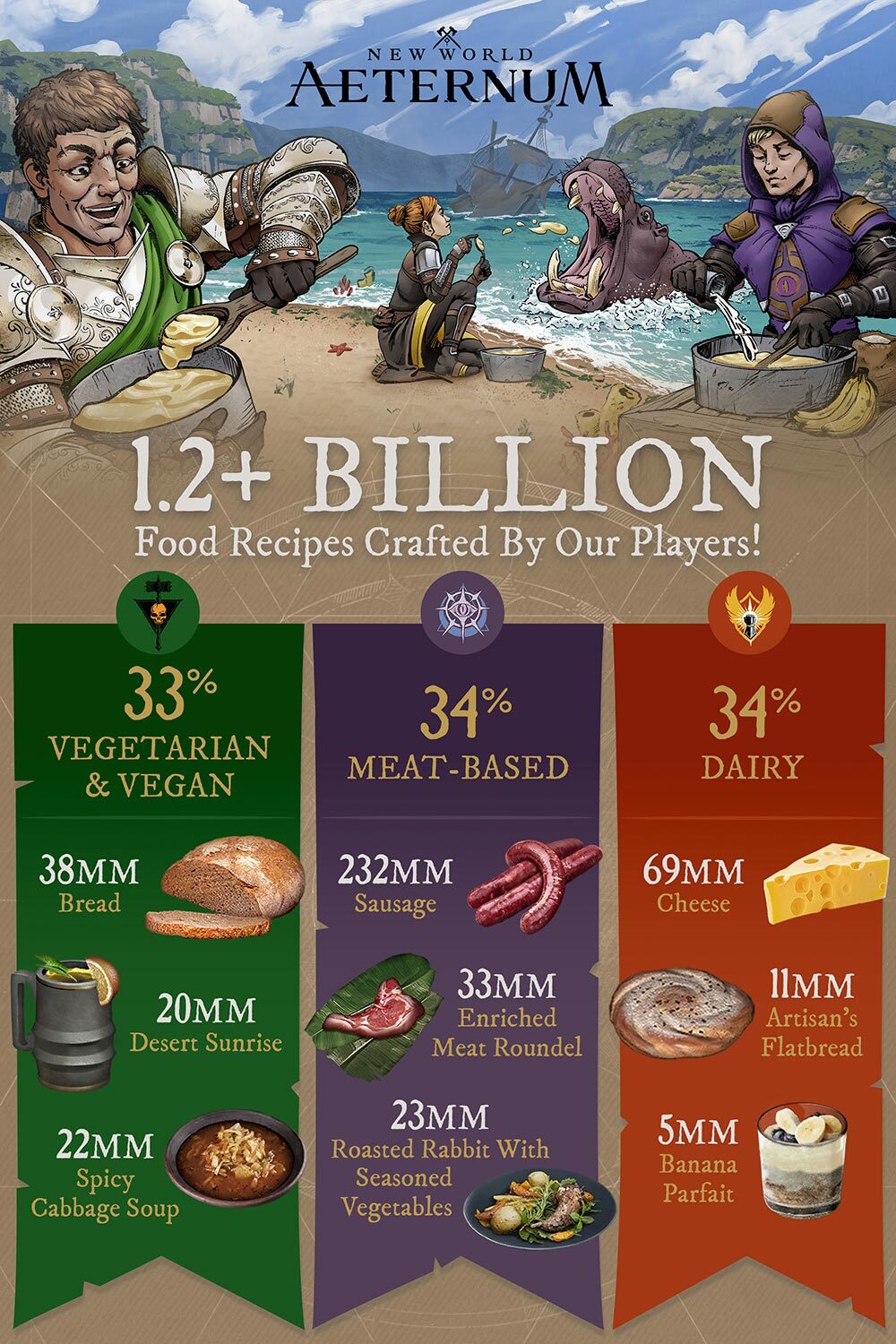
Greetings, Adventurers!
Amazon Games and New World are taking part in the 2024 Playing for the Planet Green Game Jam. The Green Game Jam is an annual project organized by Playing for the Planet where gaming studios are challenged to implement ‘green activations’ into their games. This year’s event is about making small changes to the way we eat to drive demand for more sustainable food sources. As part of our Feast for the Future Recipe Design Contest, we partnered with players to design a sustainable in-game cooking dish. While resources in Aeternum may respawn infinitely, we must consider the environmental impact of our choices in the real world.
Aeternum is self sustaining. No matter how much Banana Pudding and other delicacies are devoured, food sustainability is never a concern for the inhabitants of the Eternal Isle. Whether you forage into the bioluminescent jungle of the Elysian Wilds or scavenge through the ancient ruins of Brimstone Sands, there is abundance and no waste — a paradise for food sustainability. In the real world, what we eat and where it comes from impacts our world in significant ways. From land use to transportation, processing, and packaging, greenhouse gas emissions are an unfortunate consequence of each step. Some sources of food have more significant impacts than others, especially for your own well-being.
How does New World compare to the real world? How much of the food types did players craft? What were the top recipes prepared? Check out our Feast for the Future infographic to see how Aeternum compares to our world.

Meat and Dairy recipes comprise the majority of crafted consumables in Aeternum with over 800 million (67%) crafted. Total Vegetarian and Vegan dishes crafted surpassed 400 million (33%).
If Aeternum was real and not eternally self-sustaining, the impact on food sustainability would be significant. Meat and Dairy consumption have the most significant impact on greenhouse emissions from land, feed, processing, and waste while non-meat food have reduced impacts across these categories. With a global average consumption of meat and dairy around 30%, any further increase in greenhouse gasses would mean significant deforestation, water scarcity, biodiversity due to natural habitat loss, and the pollution of air, soil, and waterways. Not even the all-powerful Azoth Tree would survive.
To learn more about our food and specific sources of what we eat, visit “Our World In Data” for an interactive look at the impacts across the supply chain.
- Our World in Data: Infographic on greenhouse gas emissions in the food supply chain
- Our World in Data: FAQs on the environmental impacts of food
Thanks for your participation in Feast for the Future! We’ll see you in Aeternum.
SE MERE
